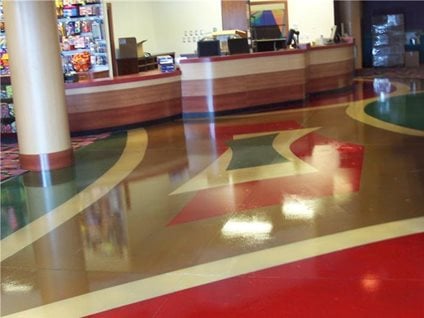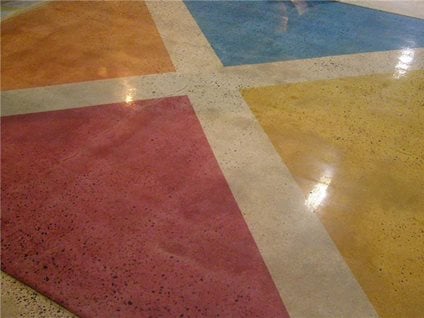If you want to completely change the color of a concrete floor, there are a variety of products you can apply topically to achieve opaque or semi-translucent color effects. While these products are sometimes called concrete “paints,” they are really dyes or water-based acrylic stains formulated specifically for concrete. Don’t be tempted to use the same paint you would use for walls or other surfaces. Because of concrete’s porous nature, they are likely to peel, especially when applied to concrete slabs on grade (see Repair Tips for Peeling Paint). True concrete stains and dyes breathe so any moisture within the concrete doesn’t get trapped beneath the surface, causing the topical color to blister.

Water-based stains
Water-based stains (typically a blend of acrylic polymers and pigments) penetrate the concrete to produce permanent color, ranging from translucent to opaque depending on the product. They go beyond the subtle translucent color effects of acid-based stains and come in a much broader spectrum of hues. Most manufacturers offer dozens of standard colors, including black and white and even metallic tints. (See Creating Excitement with Color.)

Concrete dyes
Unlike stains, which react chemically with the calcium hydroxide in concrete, dyes are nonreactive and impart color by penetrating concrete or other porous cementitious surfaces. Dyes are much smaller in particle size than chemical or acrylic stains, allowing for easier penetration and color saturation. Dyes are available in water- or solvent-based formulations and produce looks ranging from monotone to translucent. Water-based dyes typically produce more marbling and variegation (similar to the look of a chemical stain), while solvent-based dyes tend to be more monotone and uniform in color. (See Concrete Dyes Expand the Color Palette of Concrete Stains.)